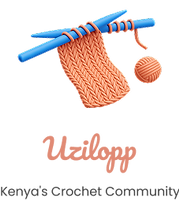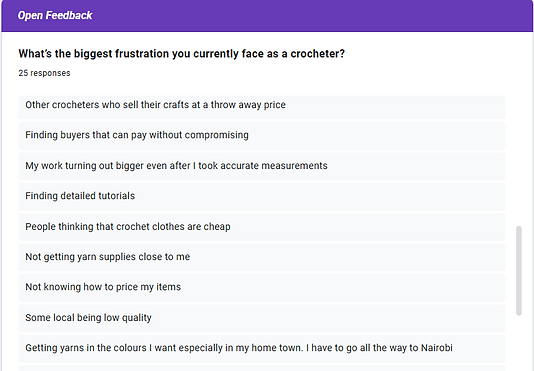
A mobile/web application designed to connect crochet artisans with buyers, streamlining the process of showcasing handmade products, managing custom orders, and building trusted seller-buyer relationships in a vibrant creative community


My goals here are:
-
Tell the story of this project in a way that feels personal and engaging, while showing how I think as a designer, highlighting my research process and problem-solving approach, and let you feel like you’re part of the journey, not just an observer.
This was a personal project in which I collaborated with a developer with the intention of monetizing the platform in the future. Because of that, there was a lot of trial and error, and plenty of flexibility, which gave me room to experiment and try new ideas.
I put my work online, and on this fateful day, I got an inbox from a software developer, asking to collaborate on an idea that he had, a crochet marketplace, The vision was simple but powerful: a space where crocheters, who pour countless hours of love and skill into their craft, could finally connect with buyers who truly value their work. For many of them, finding clients or a trustworthy platform to share their creations had been an uphill battle. This project was about giving their art the home it deserved."
The start

User Research
We knew that to design something valuable, we had to understand the people who’d use it. So, we went straight to the source: crocheters.
We joined crochet groups on WhatsApp and Facebook, in Kenya, listened, observed, and slowly introduced our project. Once trust was built, we shared a short Google Forms questionnaire.
The questions weren’t just about tools or sales; we wanted to hear their frustrations, hopes, and what “success” meant to them. The answers were eye-opening.
Take a look at the questionnaire here: https://forms.gle/U7dtFKQKpv1RoHry6


Most of the crocheters were between 18 and 24 years old.
Knowing this changed the way I approached the design. I wasn’t just building a generic selling platform; I was creating a space for Gen Z makers. And as a Gen Z myself, I knew exactly what that meant: the platform had to feel fun, fast, and intuitive.
It needed to go beyond just listing products; it had to spark joy, encourage creativity, and feel like a place you’d want to hang out, not just transact.

The open feedback was my favorite part; hearing users speak freely about their concerns and experiences felt like getting a behind-the-scenes look at their world.


Definition

From the research, I identified three main priorities for the platform:
-
Buy & Sell Feature – Addressed the biggest challenge: helping crocheters sell their work easily and securely.
-
Supplier Connection – Linked makers to affordable, reliable yarn suppliers to reduce material costs.
-
Community Add-On – Created a space for sharing progress, tips, and building connections with fellow makers.
Ideation
I jumped right into using AI tools to spark ideas for what the platform could look like. I’m a big advocate for AI, it’s an incredible way to speed things up and explore possibilities, but I never let it replace my creative direction. For me, AI is a co-pilot, not the driver.
Once I had a base concept, I made my own design tweaks to give the platform the exact feel I wanted: playful, modern, and welcoming for Gen Z makers.

My shortcoming

In all the excitement of this project, I found myself adding too many features, trying to make the platform do everything at once. When I realized this, I took a step back and applied the MoSCoW method; a way of sorting features into;
-
Must have (essential for launch)
-
Should have (important but not critical)
-
Could have (nice-to-haves)
-
Won’t have for now (ideas to save for later). This helped me refocus on what truly mattered and return to the drawing board with a clearer plan.
Design Exploration
With the priorities clear, the next question was: where do we start? Instead of going all-in on mobile, we decided to first build a web app version. The goal was simple: test out the ideas quickly, validate the core flows, and gather feedback before investing more time and resources into a full mobile product.
The web app gave us the flexibility to move fast and make changes without being tied down to app store releases or long development cycles.
From there, I moved directly into interface design. I explored different layouts, colors, and navigation styles, constantly iterating until the pieces started fitting together. The aim was to balance marketplace functionality with a playful, community-driven feel that spoke to Gen Z makers.
Landing page



Seller Onboarding
Step 1
_edited_edite.jpg)

Step 2
Step 3

Final onboarding

Listing Item

Sellers profile

